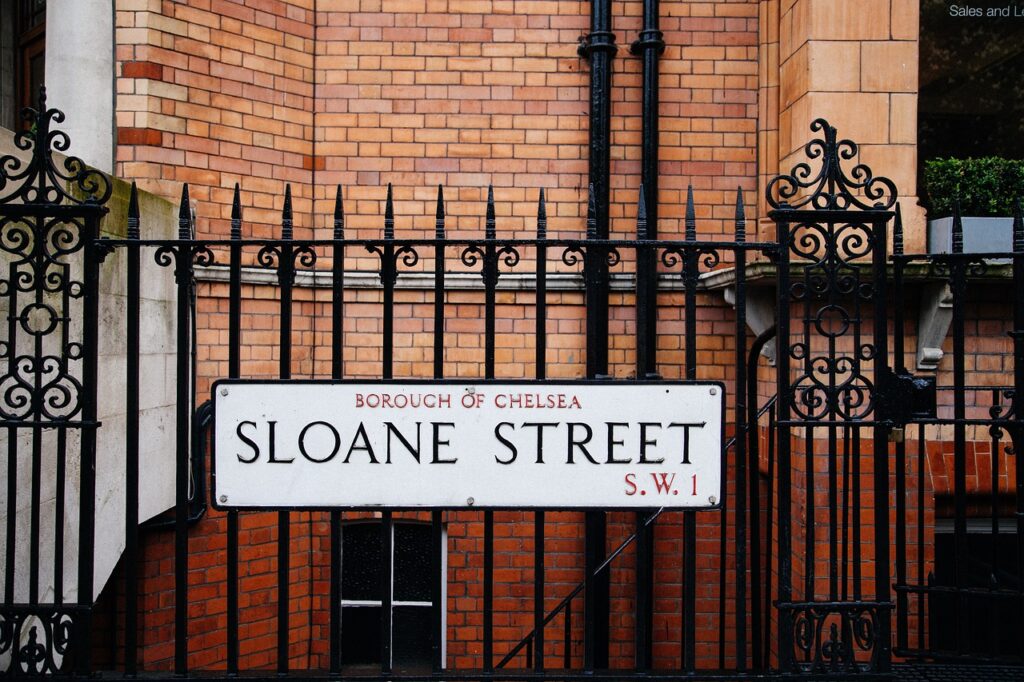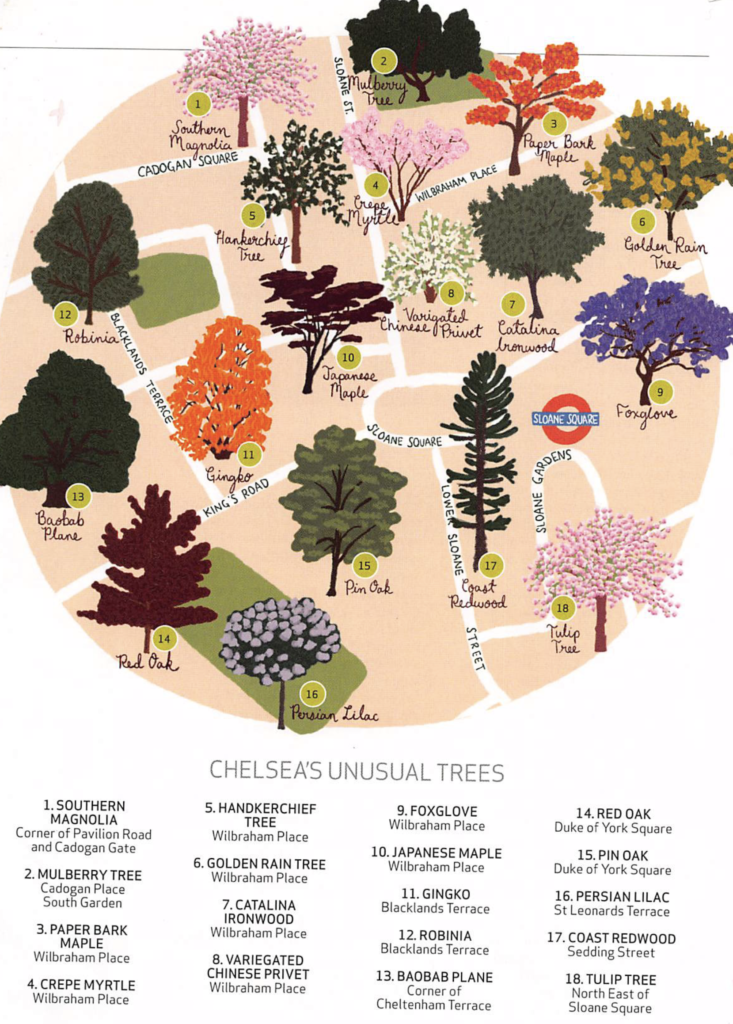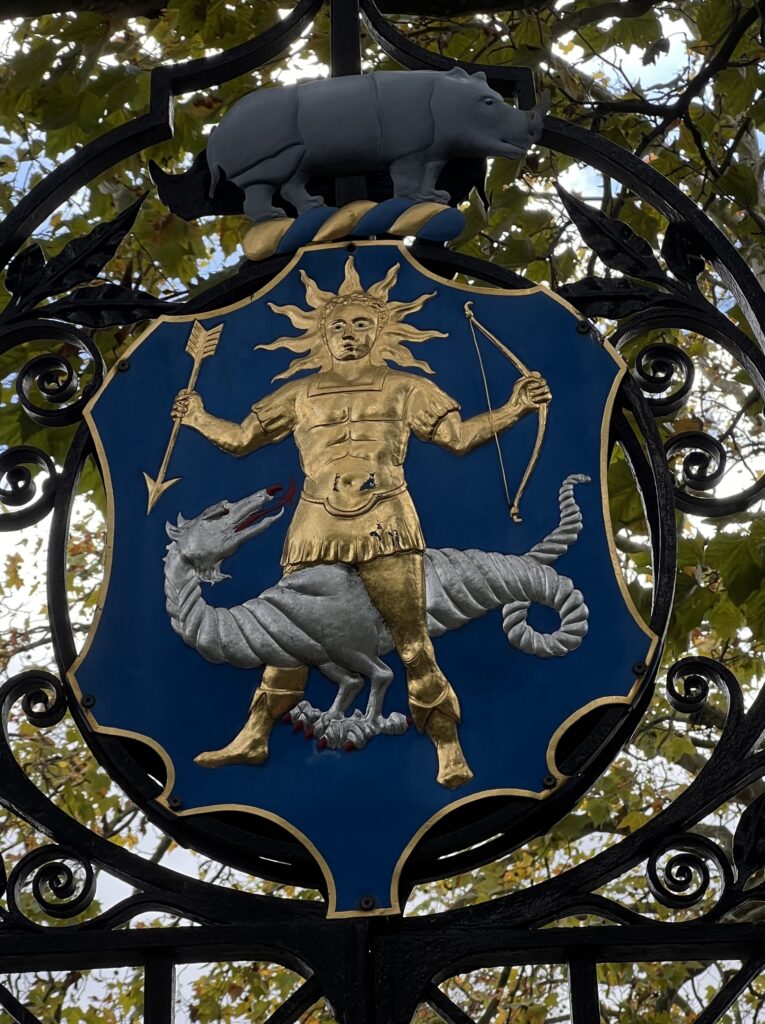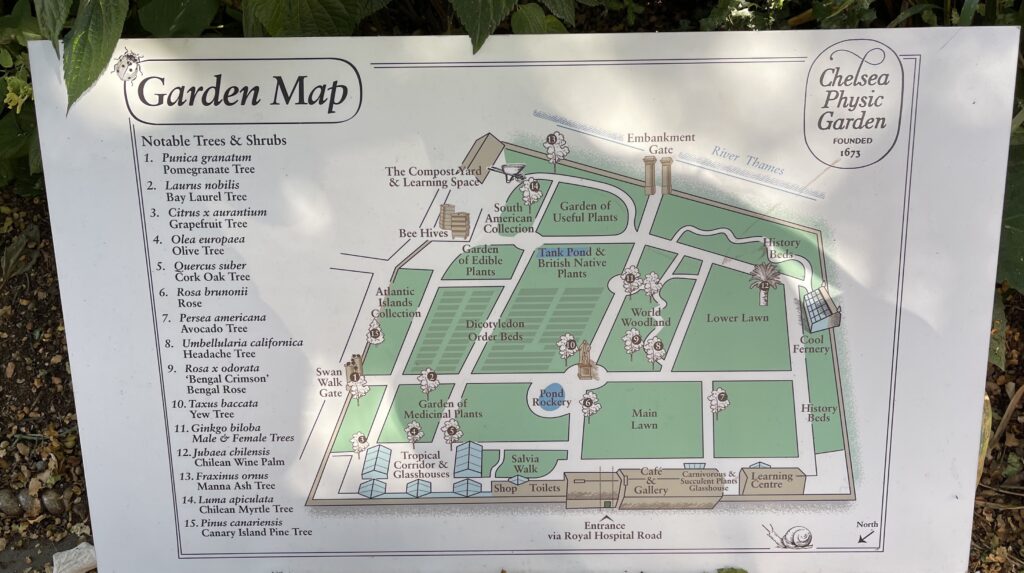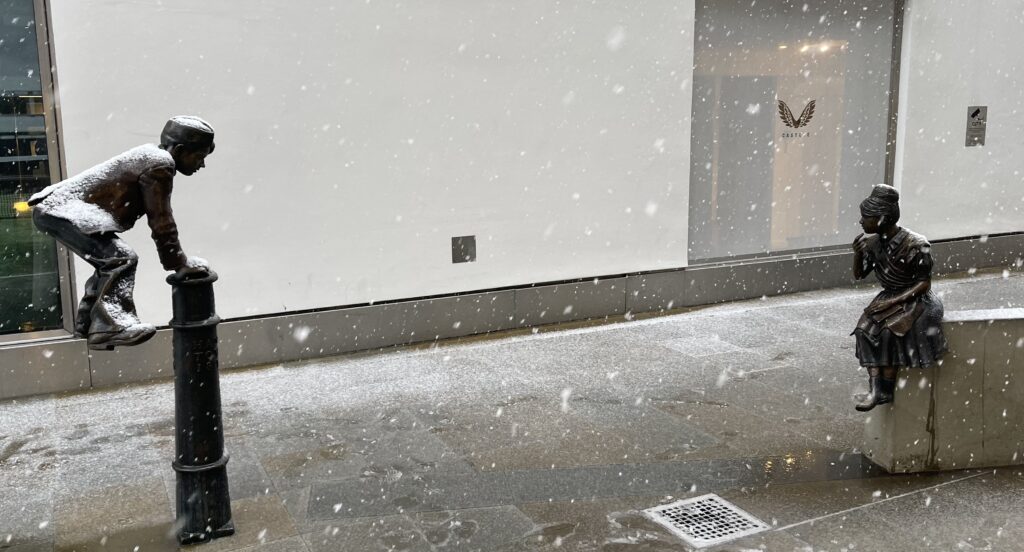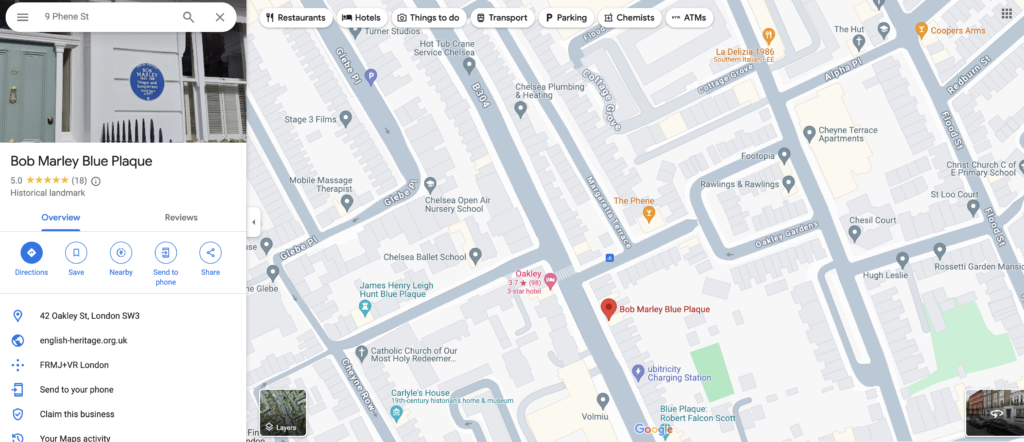Exploring the feng shui of Chelsea, London, provides a unique opportunity to apply the ancient principles of feng shui to a contemporary urban environment. Chelsea, with its rich history, architectural variety, and vibrant natural landscapes, serves as an intriguing case study for examining how feng shui can enhance the well-being and environmental harmony of urban dwellers.
Feng shui, an ancient Chinese art and philosophy, aims to harmonise individuals with their surrounding environment through the meticulous arrangement and orientation of space. Central to feng shui is the concept of qi (chi), the flow of energy or life force that binds the universe, earth, and humanity together. The practice involves the strategic placement of elements and objects to optimise the flow of qi, which, according to Chinese metaphysics, influences the health, wealth, and personal relationships of the inhabitants.
Chelsea, a prestigious neighbourhood in West London, presents a blend of historical and modern elements, creating a dynamic canvas for feng shui principles. The area’s distinct Victorian and Georgian architecture, coupled with its modern developments, offers a unique challenge and opportunity for implementing feng shui in a way that respects both its historical roots and contemporary lifestyle.
The Role of Natural Elements
In Chelsea, the proximity to the River Thames and abundant green spaces, such as the Chelsea Physic Garden and Battersea Park, aligns well with feng shui’s emphasis on integrating natural elements into living spaces. Water, representing wealth and prosperity in feng shui, is a key element of Chelsea’s landscape. Strategically utilising the river’s presence could enhance the qi flow, potentially boosting the area’s affluence and the well-being of its residents.
Green spaces are crucial in mitigating the ‘sharp qi’ emanating from angular urban architecture. In feng shui, sharp corners are believed to generate negative energy, impacting residents’ well-being. Chelsea’s gardens and parks provide natural refuges, offering a harmonious counterbalance to the urban environment and promoting positive energy flow.
Architectural Considerations
Chelsea’s architecture, characterised by its elegance and historical significance, provides a foundation for incorporating feng shui principles that emphasise balance and harmony. The armchair configuration, a feng shui concept that advocates for strong support from behind (represented by historical buildings) and an unobstructed view in front (open spaces and waterways), can be applied to enhance the sense of security and prosperity in residential and commercial spaces.
The orientation and design of buildings in relation to the natural landscape and the positioning of entrances and windows can significantly impact the flow of qi. Ensuring that buildings receive ample natural light and have views of nature can improve residents’ and workers’ health and productivity, aligning with feng shui’s goal of creating harmonious and life-enhancing environments.
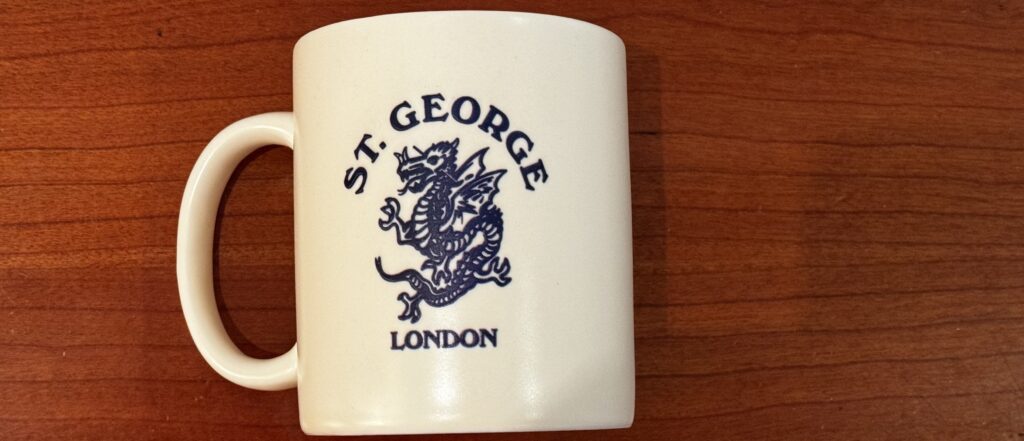
Western dragon 2024. In the west there is a long tradition of dragons of all kinds – this found in Chelsea, London, King’s Road.
The King’s Road in Chelsea, London
The King’s Road in Chelsea, London, with its vibrant history, cultural significance, and bustling urban environment, presents a fascinating case for the application of feng shui principles in enhancing the harmony and well-being of urban spaces. As a prominent street known for its fashion, art, and design, King’s Road encapsulates the dynamism of modern life while retaining its historical charm. This analysis will explore how feng shui can be applied to such a dynamic urban thoroughfare to promote positive energy (qi) flow, prosperity, and well-being among its inhabitants and visitors.
Historical Context and Modern Dynamics
King’s Road’s transition from a private royal road to a public cultural icon mirrors the feng shui principle of transformation and flow. Historically, roads and pathways are significant in feng shui for their role in directing qi throughout a landscape. King’s Road, with its rich history and evolution, epitomises the potential for blending traditional and contemporary elements to create a harmonious environment that respects the past while embracing the future.
Natural Elements and Their Integration
The integration of natural elements along King’s Road, such as trees, planters, and small parks, plays a crucial role in balancing the urban landscape’s yang (active) energy with yin (restorative) energy. According to feng shui, the presence of wood elements (plants and trees) can support growth, vitality, and the flow of wealth. Enhancing greenery along the road can mitigate the ‘cutting qi’ generated by the sharp angles and busy traffic, promoting a more tranquil and positive atmosphere conducive to the well-being of shop owners, residents, and visitors.
Architectural Harmony and Design
The architectural diversity along King’s Road, including historic buildings and modern shops, offers opportunities for applying the feng shui concept of the armchair configuration. This involves ensuring buildings and spaces have a “strong back,” representing support and protection, and an “open front,” allowing for a clear view and the free flow of energy. Facades and storefronts can be designed or adjusted to be more welcoming, with entranceways positioned to attract qi, potentially enhancing business prosperity and the overall vibrancy of the street.
Social and Community Spaces
King’s Road is more than just a thoroughfare; it’s a social hub where people meet, interact, and engage in communal activities. Feng shui emphasises the importance of social connectivity and community well-being. The layout of public seating, open spaces, and community areas along King’s Road can be optimised to encourage positive interactions, creating “gathering qi” that fosters a sense of community and belonging. This includes the strategic placement of public art, water features, and communal gardens that serve as focal points for social interaction and relaxation.
The Chelsea Physic Garden
The Chelsea Physic Garden, nestled in the heart of London, presents a quintessential example of how feng shui principles can be harmoniously intertwined with the design and purpose of a historical garden. Established in 1673 by the Worshipful Society of Apothecaries for the study of medicinal plants, this green sanctuary not only supports physical healing but also embodies the feng shui ideals of harmony, balance, and connectivity between humans and the natural world.
Integration with Natural Elements
Central to feng shui is the belief in the importance of living in harmony with the natural world. The Chelsea Physic Garden, with its rich diversity of plant life, including medicinal herbs, rare plant species, and a variety of ecosystems, is a vibrant embodiment of this principle. The garden’s layout and plant selection can be seen as a living manifestation of the feng shui wood element, which symbolizes growth, vitality, and flexibility. This element promotes healing, learning, and growth—attributes that align with the garden’s original purpose as a medicinal garden.
Water Elements and Their Significance
Water is another crucial element in feng shui, representing wealth, abundance, and fluidity of energy (qi). The presence of water features in the Chelsea Physic Garden, such as ponds and fountains, not only adds to its aesthetic and ecological value but also enhances the flow of positive energy throughout the garden. These water elements can help to balance the garden’s qi, creating a serene and revitalising environment for visitors and nurturing the plants it houses.
Architectural Harmony and Pathways
The garden’s layout, including its paths, greenhouses, and benches, can be optimised following feng shui principles to ensure a smooth flow of energy and easy navigation. Curved pathways, rather than straight lines, allow qi to flow more naturally and gently throughout the space, encouraging exploration and discovery. The positioning of benches and seating areas offers visitors moments of rest and reflection, allowing them to connect more deeply with the natural surroundings and the tranquil atmosphere of the garden.
The Garden as a Space for Community and Connectivity
In feng shui, the balance between yin (passive, restorative) and yang (active, dynamic) energies is essential for creating harmonious environments. The Chelsea Physic Garden serves as a communal space where people can come together to learn, heal, and find peace. The garden’s educational programs and workshops act as a bridge, connecting people to the healing power of nature and to each other. This social aspect of the garden enhances its yang energy, complementing the yin energy of the peaceful, natural setting.
The Chelsea Physic Garden is a living example of how the principles of feng shui can be applied to create spaces that promote health, well-being, and harmony between humans and nature. By integrating natural elements, incorporating water features for balance, designing pathways for smooth energy flow, and fostering community connectivity, the garden embodies the essence of feng shui. It stands as a testament to the enduring value of creating spaces that respect and reflect the natural world, offering sanctuary and healing in the midst of urban Chelsea.
Community and Connectivity
The layout and design of Chelsea’s streets and public spaces also play a role in fostering community connectivity, a key aspect of feng shui’s aim to create balanced living environments. The arrangement of public spaces, pathways, and communal areas can encourage social interactions and a sense of belonging among residents, contributing to the overall well-being of the community.
The famous residents of Chelsea – past and present
Chelsea, a prestigious area in London, has long been a magnet for artists, writers, musicians, and influential figures, contributing to its reputation as a cultural and creative hub. The area’s unique charm, elegant architecture, and vibrant atmosphere have attracted a host of famous residents, both past and present, whose contributions have enriched not only the local community but also the wider world. Here, we delve into some of these illustrious individuals who have called Chelsea their home.
Past Residents
- Oscar Wilde (1854–1900): One of the most celebrated playwrights, poets, and authors of the late Victorian era, Oscar Wilde lived at 34 Tite Street. Wilde’s sharp wit and flamboyant style left an indelible mark on literature, with works like “The Picture of Dorian Gray” and “The Importance of Being Earnest”.
- J.M. Barrie (1860–1937): The Scottish author and creator of Peter Pan, J.M. Barrie, resided at 100 Brompton Road. Barrie’s creation has become a cultural icon for childhood and innocence, inspiring numerous adaptations.
- Dame Agatha Christie (1890–1976): Renowned for her detective novels and short stories, particularly those revolving around her characters Hercule Poirot and Miss Marple, Agatha Christie lived at 58 Sheffield Terrace. Christie is one of the best-selling authors of all time.
- James McNeill Whistler (1834–1903): An influential American artist known for his painting “Whistler’s Mother,” Whistler lived and worked in Chelsea, notably at 96 Cheyne Walk. His works contributed significantly to the “art for art’s sake” movement.
- Dame Vivienne Westwood (1941–2022): The iconic fashion designer, known for bringing modern punk and new wave fashions into the mainstream, has her flagship store in Chelsea. Westwood’s designs and activism have made her a prominent figure in fashion and environmental advocacy.
- Bob Marley (1977): a Jamaican reggae singer, guitarist, and songwriter. Considered one of the pioneers of the reggae, Marley fused elements of reggae, ska, and rocksteady in his music and was renowned for his distinctive vocal and songwriting style.
Bob Marley’s Refuge in Chelsea
In the annals of music history, 1977 stands out as the year Bob Marley sought sanctuary in London’s Chelsea, post an attempt on his life in Jamaica. His residence, a four-story structure at 42 Oakley Street, SW3 is now honoured with a blue plaque—a testament to the great musician’s legacy. Marley’s stay in Chelsea wasn’t without its mishaps, as an arrest for cannabis possession led to a bit of a mix-up with the police, inadvertently complicating his biographers’ work and delaying the commemoration of his residence.
Chelsea’s Role in Marley’s Musical Innovation
Chelsea offered more than just refuge; it was a fertile ground for Marley’s unparalleled creative zeal. Within the confines of Oakley Street during a productive five-month tenure, the icon not only brought to life the legendary album ‘Exodus‘, featuring tracks like ‘Jamming‘, ‘One Love’, and ‘Three Little Birds‘, but also sowed the seeds for his subsequent album, ‘Kaya’.
Personal Life Tidbits from Oakley Street
Chelsea also witnessed the flourishing of Marley’s romance with Cindy Breakspeare, the Canadian-Jamaican jazz singer and Miss World 1976, leading to the birth of their son, Damian Marley. It was during this period that Marley discovered he was battling cancer, which ultimately claimed his life at the tragically young age of 36.
Why Choose Oakley Street?
Marley’s choice of Oakley Street as a domicile was strategic, being a stone’s throw from Battersea Park. A fervent football enthusiast, Marley would traverse the Albert Bridge to engage in the sport with his circle, in Battersea Park, including reggae contemporary Eddy Grant. These activities were complemented by sessions at the recording studio and social gatherings at The Phene on 9 Phene Street. Additionally, the locality served as a confluence for punk and reggae cultures, exemplified by Marley’s friendship with the British punk band The Clash, and is immortalised in his ‘Punky Reggae Party‘ track.
The Enduring Legacy of ‘Exodus’
‘Exodus’ soared to universal praise and birthed anthems that became international staples. It was such a phenomenal success that Time magazine, in 1999, hailed it as the 20th century’s finest album.
Immersing in ‘Exodus’ in Chelsea
For those wanting to experience ‘Exodus’ authentically, a wander up King’s Road or a visit to the football pitches at Battersea Park could provide the perfect backdrop, letting you channel Marley’s deep connection with these locales.
As we anticipate the new biopic about Bob Marley, we not only celebrate his musical journey but also the ‘Exodus’ era that Chelsea so vividly encapsulates—a true cultural artefact.
Present Residents
- Mick Jagger and Keith Richards: Members of the legendary rock band The Rolling Stones, both have had homes in Chelsea. Their music has been influential in shaping the rock and roll genre and has earned them global recognition.
- Rowan Atkinson (1955–): The actor and comedian, best known for his roles in “Mr. Bean” and “Blackadder,” has been associated with Chelsea. Atkinson’s unique brand of humor has garnered him international fame.
- Stella McCartney (1971–): The fashion designer and daughter of Beatle Paul McCartney is known for her commitment to sustainability in the fashion industry. McCartney’s store and brand have a significant presence in Chelsea, reflecting her influence in contemporary fashion.
Chelsea’s allure, drawing in such a diverse and talented array of individuals, has helped to cement its reputation as a cultural beacon. The area’s rich history, picturesque streets, and vibrant community continue to attract notable figures from various fields, contributing to its ever-evolving legacy. Whether through literature, art, music, fashion, or performance, the famous residents of Chelsea, both past and present, have left an indelible mark on the cultural landscape, not just of London, but globally.
Tite Street, SW3
Tite Street in Chelsea, London SW3, holds a unique position in both the historical and contemporary cultural landscapes of the city. Once the home to many notable artists, writers, and thinkers of the late 19th and early 20th centuries, such as Oscar Wilde, James McNeill Whistler, and John Singer Sargent, (as well as Mark Twain, on the corner of Tite Street and 23 Tedworth Square, London SW3 4DR), Tite Street’s rich cultural heritage offers an intriguing opportunity to explore how feng shui principles can enhance the well-being and creativity of its inhabitants and visitors.
Historical and Cultural Significance
The history of Tite Street as a haven for artists and intellectuals adds a layer of cultural qi or energy that is imbued within its architecture and the collective memory of the place. This historical resonance is a form of qi that feng shui recognizes as carrying the potential to influence the present environment. In feng shui, spaces that have been occupied by creative and influential individuals are considered to possess good qi, which can inspire current residents and visitors.
Architectural Harmony and Design
Tite Street’s architecture, with its Victorian-era buildings and studios designed specifically for the artists of that time, reflects principles of harmony and functionality. In feng shui, the balance and aesthetic appeal of a space are crucial for fostering the flow of positive energy. The thoughtful design of these buildings, with large windows for natural light—essential for artists—and spacious interiors, can be seen as an early alignment with feng shui principles that advocate for light, space, and air quality to enhance well-being and creativity.
Integration with Natural Elements
Despite its urban setting, Tite Street’s proximity to the River Thames and its alignment with the natural landscape play a significant role in its feng shui. Water is associated with wealth, abundance, and the flow of energy in feng shui. The presence of the river nearby enhances the area’s qi, potentially bringing prosperity and inspiration to its residents. The street’s orientation and the distribution of natural light can also influence the energy of the buildings and their inhabitants, promoting health and creativity.
Pathways and Flow
The layout of Tite Street, connecting to the bustling Chelsea Embankment and leading into quieter residential areas, mirrors the feng shui concept of the dragon’s path—where qi flows between places of activity and tranquility. Managing this flow is essential for maintaining a vibrant yet peaceful environment. Tite Street serves as a conduit of energy, balancing the dynamic qi from the riverfront with the calmer, nurturing energy of the residential area, encouraging a harmonious living and working space for artists and residents alike.
Community and Connectivity
Tite Street’s legacy as a communal hub for artists underscores the importance of community in feng shui. The street historically provided a space where like-minded individuals could connect, collaborate, and draw inspiration from one another. This sense of community and connectivity is an essential element of good feng shui, as it enhances the social aspect of qi, contributing to the overall well-being of individuals and the collective energy of the place.
Tite Street in Chelsea embodies the essence of a space where history, architecture, natural elements, and community converge to create a uniquely inspiring environment. By examining Tite Street through the lens of feng shui, we see how the principles of this ancient practice can be applied to urban settings to enhance the well-being, creativity, and prosperity of its inhabitants. Tite Street serves as a testament to the enduring value of designing spaces that respect and reflect the natural and cultural energies of their environment, fostering a harmonious and inspiring community for all who reside and visit there.
Conclusion
Applying feng shui principles to the urban context of Chelsea, London, offers a pathway to enhancing environmental harmony and the well-being of its residents. By integrating natural elements, considering architectural design, and fostering community connectivity, Chelsea can serve as a model for how ancient wisdom can inform contemporary urban living, creating spaces that are not only aesthetically pleasing but also conducive to health, prosperity, and personal growth.
If you live in Chelsea or anywhere in London and need a feng shui fine-tuning, please call/text/whatsapp me on 07956 288574

